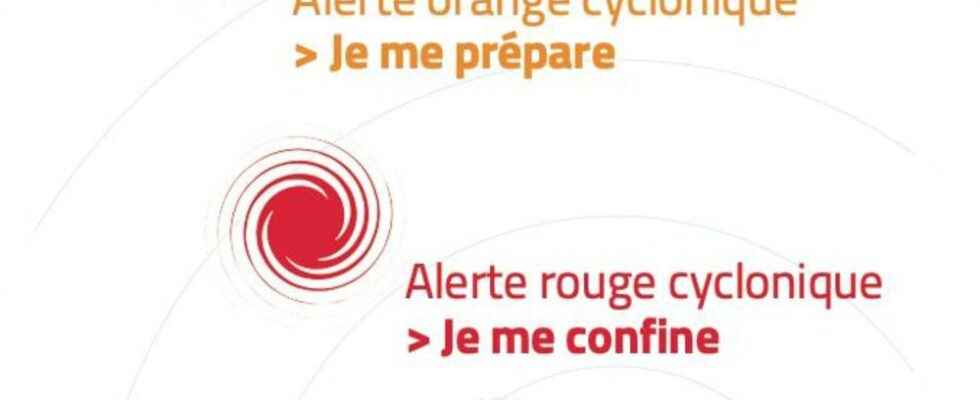“The worst is not over”. Jacques Billant, the prefect of Reunion, was particularly worried this Thursday morning. Cyclone Batsirai has already caused damage and injuries to a dozen people on the island in the Indian Ocean. “The eye is now as close as possible, 200 km from the coast. We are entering very windy, very rainy conditions for a good part of the day”, confirms Météo-France forecaster Steven Testelin, with L’Express .
Reunion was placed the day before on cyclonic red alert, at 7 p.m. local time (4 p.m. in France), requiring the 860,000 inhabitants to barricade themselves within three hours. This is logically maintained. It is penultimate alert level. The highest being the purple level, when the winds exceed 200km/h, which is not the case here.
The alert levels of the specific ORSEC Cyclones system
Screenshot
The conditions remain very disturbed, “with gusts of 100 to 120 km / h or even 130 on the coast and between 120 and 150 km / h in the heights”, indicates Météo-France in its precise monitoring of the situation. Cumulatively, up to one meter of rain is expected on the reliefs, in particular the volcanoes, and “between 100 and 400mm elsewhere”, specifies Steven Testelin.
The swell is the other worrying aspect of this high-intensity cyclone, which Reunion is rather regularly confronted with, like Ava, in 2018, or more distantly, Gamède in 2007 and Dina, exactly twenty years ago. . Thus, “large waves, on average from 5 to 6 meters and up to 12 meters”, are expected, “mainly on the northeast coast”, according to the forecaster.
Water and electricity cuts
Preventive water cuts to preserve the facilities affected Thursday morning 30,000 people and disturbances on the electricity network affected all the municipalities of the territory. Power cuts affected up to 61,000 homes, “thanks to the mobilization of EDF teams, 25,000 customers were able to be supplied via remote maneuvers”, but “36,000 customers currently remain without electricity. electricity”, reported the prefect.
The main airport (Roland-Garros) has been closed. The coastal road, a major axis of the island linking the administrative capital Saint-Denis to the port and the heavily inhabited western towns, has been closed due to the risk of strong swells. As well as the Cilaos road which winds through the mountains.
The intensity of the cyclone on site should begin to decrease, first by the rain, then by the wind at the end of the day. Wave-submersion vigilance, meanwhile, could last part of the night, underlines Steven Testelin. At the end of the week, Batsirai will continue its course on the east coast of Madagascar and in particular the Mahanoro region, forecasts Météo-France, and possibly at the stage of Cyclone Tropical Intense. The impact could be “major” for this region and heavy rains could concern the southern half of Madagascar.
